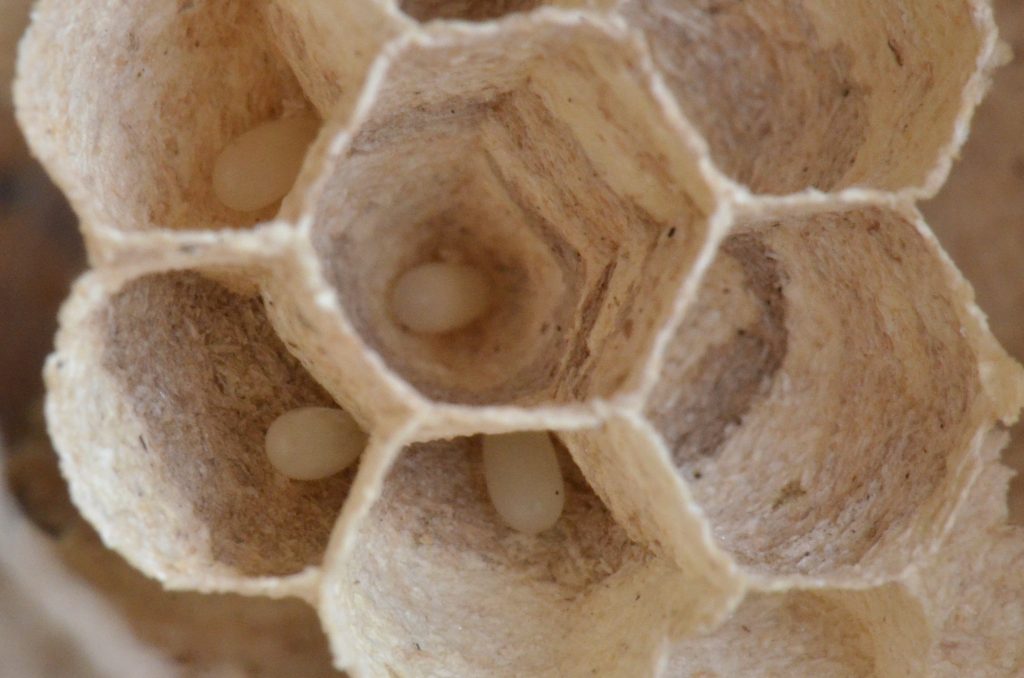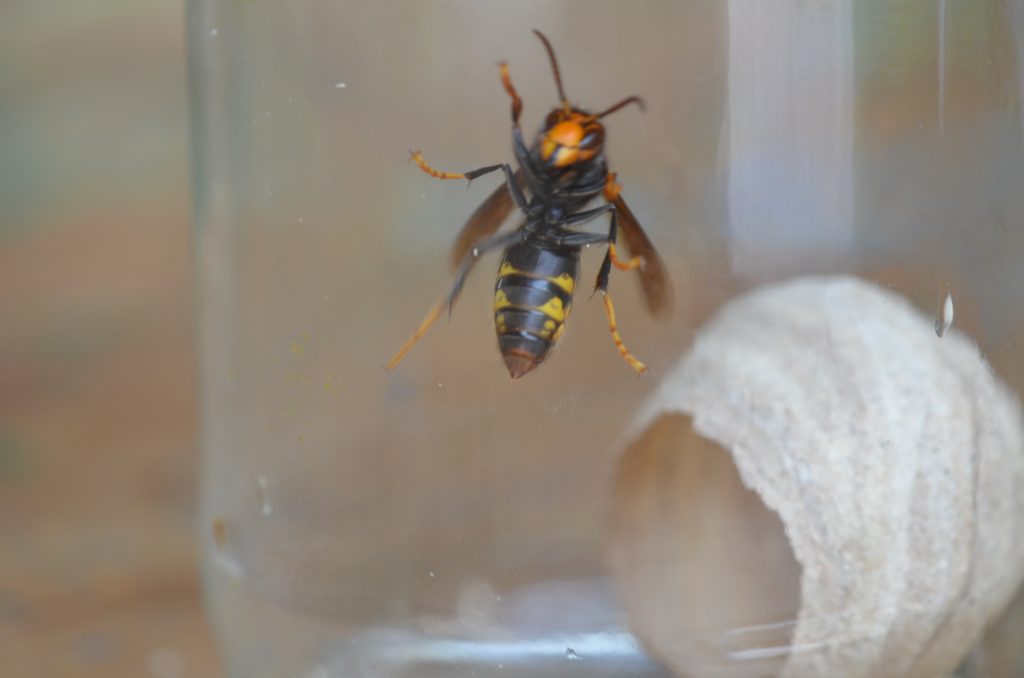As we know, Asian Hornets - Vespa Velutina - put a lot of pressure on the colonies. The hive can no longer operate normally and may be weakened. When the colony runs out of stocks or of new bees, the colony may have trouble getting through the winter. The predation takes place in late summer and during the autumn, but it is actually the result of a process initiated in the springtime with the arrival of the Asian Hornet queens.
When the Hornet queen settles down…
In the springtime, the Hornet queens come out of hibernation and start their colony in a tiny nest. This is the base colony. But this nest is relatively fragile. For this reason, the queens often settle down in sheltered places - carpentry and other lean-to areas are privileged places.

The nest contains a few cells that will give the very first workers of the colony. In the following picture, you can clearly see the structure of the nest under construction. In the photo below, you can also see four eggs.

The construction of these nests is relatively fast, about two to three days. In this case, the queen laid the eggs well before she finished it. She must act quickly because this is a risky period!
Ms. Velutina also has a strategy of camouflage when she is disturbed on her work. She hides in the gap between the envelope and the cells. In this way, she remains invisible until the danger disappears. On the picture, you can see her wings but nothing more!

The nest is designed in such a way that it leaves sufficient space for the queen to hide around the cell support. We can easily imagine her, wrapped up behind the cells.

And here’s the Hornet queen, Ms. Velutina, who's a little upset that we got her T1 to put it in a jar.

In conclusion
Against the Asian Hornet predation, preventing is better than curing. The springtime represents a key moment to limit the impact later. Keep an eye on your frames, ridges and other lean-to. These areas are prized by the queens, looking to raise their first cohort.
External links
- Predation of the invasive Asian Hornet affects foraging activity and survival probability of honeybees in Western Europe
- Defensive behaviour of Apis mellifera against the invasive Asian Hornet in south-west of France
Read also
Effects of Asian Hornet Predation on Hive Development
At the end of the season, the Asian Hornet exerts a strong pressure on the bees. But what is the real impact on the hive? How can we measure it in order to act effectively?


